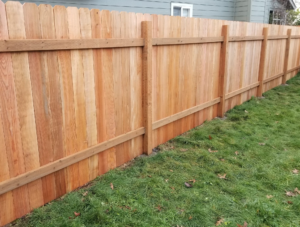A well-designed landscape can make your property more attractive and appealing to potential home buyers. Plus, studies show that spending time in nature can help reduce stress and boost feelings of happiness.

Using consistency and repetition, you can create a theme for your landscaping. Color, texture, line and form all play important roles in the overall look of a landscape. Contact Kentucky Landscaping for professional help.
Color is often overlooked as an important element of landscaping, but it can make the difference between a boring backyard and one that is truly beautiful. This is especially true in residential landscapes where homeowners are looking to create a garden that will complement their home and add to its beauty. Color can also play a role in the function of the landscape, bringing attention to focal points or creating a sense of space.
Colors evoke emotions and memories, so it is important to consider them carefully when designing your landscape. Warm colors, such as red, yellow, and orange, can bring excitement and closeness to an area while cool colors, like green and blue, can provide a sense of calm and space.
It is also important to consider the intensity of each color. Shades and tints of a particular color have different effects on the viewer, with shades being darker versions of the original hue while tints are lighter. Using these differences to your advantage can help create a balanced and harmonious landscape.
In addition to plant colors, it is important to think about the colors of hardscapes and other elements in the landscape. Patios, retaining walls, fences, and other outdoor structures can be used to create a unified and welcoming landscape by matching the colors of surrounding plants or contrasting them for visual interest.
Finally, it is important to consider the colors of the sky and other natural features when planning your landscaping. This is especially true in urban settings where the landscape can be influenced by buildings and other structures that may affect light patterns.
Landscaping is an art and science that uses a wide range of techniques to create functional, visually appealing, and enjoyable outdoor spaces. From the colored rocks and deserts of the Southwest to the lush greens and vibrant fall colors of the Northeast, there are many ways that nature can be adapted to fit the needs and desires of the people who use it. Color is a key component of any successful landscape, and learning how to use it can make the difference between a dull garden and one that will impress your neighbors.
Texture
A landscape full of texture makes the eye dance and brings life to a garden. Texture refers to the roughness or fineness of plant leaves, stems, flowers and bark. It can also describe the feel of a planting area or how a plant interacts with light and shadow in the landscape. Landscape designers are known to focus on texture as a key element in aesthetically pleasing gardens.
One of the best ways to introduce texture is with foliage. The coarse and fine leaf shapes, sizes and patterns of plants create an overall texture that can change as the garden is viewed from different angles. Foliage with a fine or delicate pattern can be paired with larger, bolder leaves to balance the textures and provide contrast. Large leaves create a sense of depth and space in a garden, while fine leaves add intimacy and cohesion.
Hardscapes such as rocks, gravel and mulch can also be used to create texture in the landscape. The color of these elements can also be a factor in their appeal. For example, red mulch may compliment a brick house, while cocoa brown might be ideal for a home with a woodsy, natural feeling.
The touch of a plant is also an important aspect of its texture. Soft, fluffy or feathery plants will encourage the customer to reach out and touch the plants, making them more engaging. A shady garden can be improved by adding the textured fronds of ferns. They are easy to grow and add an evergreen element to a shady garden.
The final aspect of texture that our landscape design team pays close attention to is how the textures of a garden blend together. The harmony of the combination of textures is what creates a truly beautiful garden. Keeping these aspects in mind, you can transform your client’s landscape into a living work of art that is as captivating to the touch as it is to the eye.
Form
Form, along with line and color, is one of the most important aspects of landscape design. This is because form deals with the three-dimensional qualities of your outdoor areas and how they relate to each other. Form contrasts with line, which deals primarily with the two-dimensional attributes of a design.
Unlike lines, which are created by horizontal or vertical elements in the landscape, form deals with the shape of hardscape and plant/shrub shapes. This includes rectilinear forms of the house, walkways and driveways as well as rounded or irregular forms of plants or shrubs. It can be used to create a more formal feel by using shaped shrubs or a more informal look by using natural-looking plants.
Landscape forms evoke emotions and create ambiance. Rectilinear forms can feel structured and formal, circles can create a softness, triangles are strong and irregular shapes give off a casual feel. Forms also impact the mood and can be used to define a focal point or to draw the eye toward a specific area in your yard.
A variety of forms is key in a balanced landscape to prevent your landscape from appearing too formal or informal. You can accomplish this by incorporating various forms of plants, varying the heights of your landscaping features and introducing rounded forms in your hardscape to balance out sharply angled structures like outdoor fireplaces or retaining walls.
Shrubs come in a variety of forms including upright, vase-like, mounding and spreading, and cascading and spiky. The form of the shrub determines how it will be used in your landscape. The upright and spiky shrubs are more often utilized as specimen plants while the vase, mounded and spreading forms work best when planted in mass.
The overall theme of your landscape is determined by a combination of factors, such as your personal taste, the function of your outdoor spaces and the type of environment you wish to create. Themes can be as simple as a color palette or as complex as a horticultural style. In the latter case, your landscape theme may be based on French, Spanish, Italian or Middle Eastern garden styles, or more casual themes may include meadow, desert, woodland or marsh plantings.
Mood
Mood is one of the most important elements to consider when creating or selecting landscape designs. It can affect a person’s mood and emotional state, which is crucial to their overall well-being. The right landscape can elevate your mood by triggering positive emotions and relaxing the body and mind. It can also reduce your stress level and encourage physical activity, which is important for mental health.
The use of color is another element that can be used to evoke specific feelings and moods in a landscape. For example, reds and purples are stimulating colors that can boost energy levels, while blues and greens are calming and peaceful colors. Additionally, using the right light can enhance a landscape’s mood and feeling. Bright, clear sunlight will give a scene a sense of happiness and positivity, while dark, moody lighting can create a spooky or mysterious atmosphere. Post-processing can further enhance the mood of a landscape photo by playing with exposure levels and light and shadow adjustments.
Researchers have found that people’s landscape preferences differ according to their mood states. For instance, those in a happy mood tend to prefer open landscapes, while those who are in a sad mood often like more sheltered spaces. It is important to design landscapes that appeal to a wide range of moods, so everyone can find a place to relax and rejuvenate.
The study analyzed the responses of college students to examine how their landscape preferences changed with different mood states. Respondents were asked to select their preferred landscape from a set of options. They were then asked to rate their mood after viewing the landscape. Statistical analysis revealed that the landscape preference of respondents in various mood states was closely related to their total mood disturbance (TMD) scores, with some significant differences between groups. The survey results showed that the landscape preferences of respondents with fatigue- and confusion-dominated moods were more influenced by their TMD than those of the other mood states. Moreover, the preference for a natural-dominated landscape with a minimal built environment was most prominent among respondents in tiredness and confusion-dominated moods.


